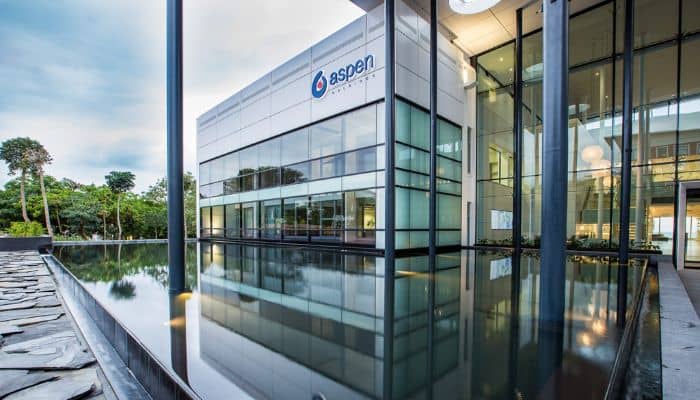At the intersection of technological innovation and evolving consumer behaviours, 2024 is set to be a dynamic year marked by transformative trends that will shape the retail media and advertising landscape. From free ad streaming TV’s (FAST) exponential growth to the impact of AI in advertising, Let’s take a look at some strategic shifts poised to define the year ahead in an interview with experts from Nexxen.
“FAST” growth
For Tanja Williams, director of client success at Nexxen, as media consumptions continue to evolve we expect to see the momentum of connected TV (CTV) viewership continue.
“Advertisers will spend more time and resources understanding what their audiences are watching in this fragmented space. We will see increased investment in CTV advertising, especially in the free (and ad-funded) services as the economic situation forces people to evaluate their expenditures and the Hollywood strikes affect new programming being produced,” she says.
She added, “Free Ad streaming TV (FAST) services will continue to grow exponentially as users see the benefits in niche channels, as well as their savings. We expect that these services will also evolve in 2024, engaging users and keeping them coming back. Advertisers will see the benefits by leveraging programmatic and data-driven targeting and converged insights.”
AI to significantly impact the scope of advertising in 2024
Meanwhile, Jay Kim, director of analytics and platform solutions for APAC at Nexxen said that AI will have significant impacts on the scope of advertising in 2024. “But we should specifically focus on AI Modelling, which we’ll be utilising quite heavily next year across our VIDAA ACR data activation and measurement,” he explains. He identifies three key AI trends impacting retail media:
- Personalisation at Scale: AI algorithms excel at processing large data sets to identify patterns and preferences among consumers. By 2024, these algorithms will have become more sophisticated, allowing for even more granular and personalised advertising experiences without manual segmentation.
- Predictive Analytics: AI’s predictive capabilities are expected to improve, allowing businesses to anticipate consumer needs and trends more accurately. Advertisers could leverage these insights to target users with the right message at the right time, potentially even before the consumer has fully recognised their own needs.
- Predictive analysis and AI data modelling are advanced techniques that leverage statistical algorithms and machine learning to identify the likelihood of future outcomes based on historical data. They are critical in various sectors, including digital advertising, where they can forecast trends, user behaviour and the impact of different advertising strategies.
“Furthermore, attention measurement in digital advertising is a critical aspect of understanding the effectiveness of ads,” he says. “By 2024, the methods and technologies to measure attention are likely to have advanced significantly, incorporating more sophisticated data analytics, biometric measures and AI-driven insights.”
Location-based targeting for retail media
According to Andrew Dixon, vice president of sales for APAC at Nexxen, several key trends are shaping the future of location targeting for retail media.
“As location-targeting technology continues to evolve, we can expect to see even more innovative and effective ways to reach consumers with relevant advertising. Nexxen Locate helps brands to drive sales by using geo and hyper-local targeting,” he explains.
Below is an example of how Nexxen’s location targeting is being used in retail media:
- Omnichannel targeting: Location targeting is becoming increasingly integrated with other marketing channels, such as social media and email marketing. This allows brands to create seamless and personalised experiences for their customers across all channels.
- Increased use of first-party data: Retailers are collecting more and more data about their customers, including their purchase history, location data, and browsing behaviour. This data can be used to target ads with greater precision and relevance.
- Use of AI: AI is being used to develop more sophisticated location-targeting algorithms that can identify patterns and trends in data. This can help brands target their ads more effectively and reach a wider audience.
- Geofencing combined with contextual targeting: This powerhouse duo not only refines the precision of advertising but also creates a dynamic interplay between location and consumer context. By seamlessly merging real-time adaptability, hyper-local engagement and insightful foot traffic analytics, a geofencing strategy ensures that each interaction is not just targeted but tailored to the nuanced preferences and behaviours of its audience. It’s more than advertising; it’s about creating personalised, memorable experiences that resonate with customers wherever they are.
Interoperable identity solution
Janice Chan, director and vice president of platform and client services for APAC at Nexxen reveals ehile the deprecation of third-party cookies is a tired topic, it will remain a significant talking point in the coming year.
“Google has outlined its plans to migrate 1 per cent of Chrome users to the Privacy Sandbox, disabling the third-party cookies for this segment starting early 2024. The full deprecation is scheduled to conclude in the latter half of 2024, marking a pivotal moment for the industry,” she explains.
“However, thanks to Google extending the cookie deadline multiple times since early 2022, the majority of market players have developed more integrated identity solutions over the past few years, reducing their reliance on third-party cookies.”
In 2024, Chan anticipates there will also be stronger asks in the market for higher interoperability between different identity solutions, on both the demand and supply sides, to enable more seamless audience planning, activation and measurement across different mediums.
“However, there is still a long way to go for a truly interoperable identity ecosystem, especially with the rise of CTV and walled gardens. As identity solutions gain more traction, advertisers will start demanding a more interoperable identity solution to understand, share, activate and measure audiences in a unified approach, helping to unlock the full benefits of cross-channel advertising,” she adds.
“Apart from enriching and advancing the use of first-party activation via identity partners, contextual targeting will stay as one of the most popular tactics for brands to engage with audiences on the right content at the right time. Contextual targeting also has a lower activation barrier since it doesn’t rely on cookies and can deliver strong performance with cost efficiency.”
Growing reliance on ACR
For Josif Zanich, managing director for JAPAC at Nexxen, as 2024 approaches, Automatic Content Recognition (ACR) is poised to become a pivotal tool across the dynamic Asia-Pacific (APAC) region.
“ The scarcity of ACR data at scale has made it challenging for brands to truly understand how users interact with their Smart TVs and associated apps. However, ACR technology steps in as a catalyst, providing a wealth of insights that were previously elusive,” he says.
“Furthermore, by leveraging its sophisticated content recognition capabilities, ACR not only bridges the data gap but also adds valuable colour and depth to planning, buying and analysis at scale. As we move forward, we anticipate a growing reliance on ACR in the APAC region, not as a replacement but as a complementary tool that enriches the planning and buying processes.”
The ad server evolution in CTV and BVOD environments
Lastly, Adam Hunt, vice president of partnerships and business development for JAPAC at Nexxen reveals as the gap between streaming and linear audiences closes, publishers are placing increased importance on ensuring their tech stacks are set up to perform with the inevitable demands of a streaming-first future.
“One of the main areas of focus is ad serving, as the “broadcast quality” experience that BVOD publishers strive for becomes increasingly important to manage effectively with more eyeballs. The ability to monetise these digital audiences through advertising remains a key component for success for all broadcasters, which is expected to grow in importance as streaming audience share continues to shift,” he says.
“Many CTV publishers are choosing to test and onboard secondary ad servers that have been purpose-built with the demands of CTV ad serving at the core of their functionality, best achieving the linear viewing experience for their audiences and maximising programmatic revenue through unified auctions.”
“Unified auctions that allow multiple demand sources to compete simultaneously for the same ad slot, ensure back-to-backs and competitor clashes are avoided, as well as lower page latency, higher inventory yield and increased fill rates. Combined with growing advertiser sentiment towards programmatic and an increase in CTV ad inventory, the role of programmatic is expected to gain a crucial role in monetising CTV and BVOD environments.”
The insight is published as part of MARKETECH APAC’s thought leadership series under What’s NEXT 2023-2024. What’s NEXT 2023-2024 is a multi-platform industry initiative which features marketing and industry leaders in APAC sharing their marketing insights and predictions for the upcoming year.













